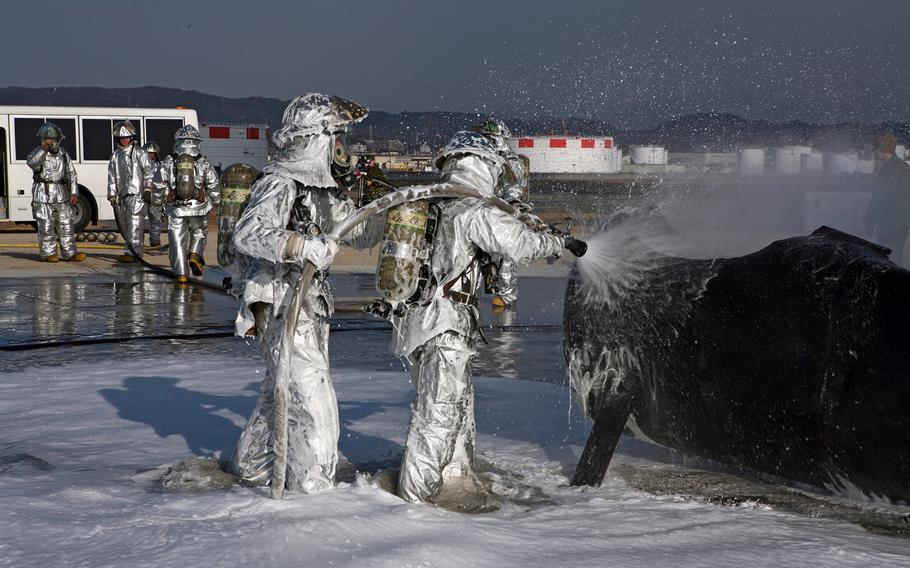
The Marine Corps on Okinawa has replaced firefighting foam known to contain harmful contaminants with a more environmentally friendly version. A May report published by the National Institute of Standards and Technology concludes that “forever chemicals” known as PFAS — some linked to cancer — are present in textiles commonly used in the protective gear firefighters wear. (Vanessa Jimenez/U.S. Marine Corps)
Firefighters’ turnout gear — the heavy clothing they don before fighting a fire — is essential protective equipment. But the textiles that make the clothing fireproof carry hazards of their own. A May report published by the National Institute of Standards and Technology concludes that “forever chemicals” known as PFAS — some linked to cancer — are present in textiles commonly used in the gear.
Per- and polyfluoroalkyl substances are commonly used in industrial products, earning their everlasting status because they break down slowly, or not at all, in the environment. In recent years, the chemicals have been identified in everything from drinking water to food wrappings, and PFAS exposure has been linked to kidney, ovarian and other cancers.
PFAS exposure is thought to be common in firefighters, who have long fought fires with PFAS-laden foam and whose profession is associated with higher blood serum levels of PFAS and higher cancer risk than non-firefighters.
NIST researchers looked at 20 new samples of textiles used in turnout gear. The analysis revealed between 1 and 17 types of PFAS in each textile — 53 types in all.
Turnout gear includes three layers: a thermal liner next to the skin, a moisture barrier and a water-repellent outer shell on top. PFAS concentrations were lowest on the gear closest to firefighters’ skin and highest on the outer second and third layer.
“If you changed to a non-PFAS water repellant coating on the outer shell, then you essentially eliminate PFAS from that layer,” said Rick Davis, a NIST researcher who co-wrote the paper, in a news release. “On paper this sounds easy to solve — just use a non-PFAS based water repellent — but we need to know we aren’t just swapping out one risk for another.”
NIST is continuing tests on fire equipment, including turnout gear that has been laundered or exposed to heat and other factors. The institute will also evaluate other potential sources of firefighter PFAS exposure, such as gloves and dust collected from fire stations.
The research was carried out in response to U.S. legislation directing NIST to study PFAS in firefighting equipment — the result of advocacy from firefighters eager to understand the occupational hazards presented by the chemicals.